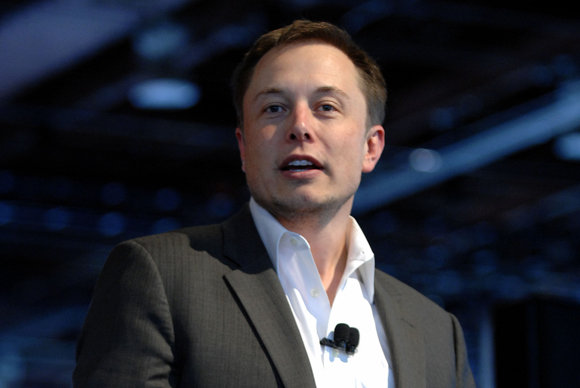
TESLA CEO ELON MUSK ON THE APPLE CAR: ‘IT WILL EXPAND THE INDUSTRY’
The Tesla CEO doesn’t feel threatened by the forthcoming Apple Car, which he calls an “open secret.”
It’d be normal for car company execs to feel a tad threatened by the much-rumored Apple Car, but Tesla CEO Elon Musk is not one of those people. In fact he sounds happy to see Apple entering the electric car market.
“It will expand the industry,” Musk told the BBC this week, before reaffirming his own company’s goals. “Tesla will still aspire to make the most compelling electric vehicles, and that would be our goal, while at the same time helping other companies to make electric cars as well.”
Unlike the rest of us, Musk seems certain that Apple is, in fact, developing an electric car. In the interview, he called Project Titan an “open secret.”
“It’s pretty hard to hide something if you hire over a thousand engineers to do it,” Musk said.
The Apple hiring spree for Project Titan kicked off back in February. Even the early hires suggested back then that Apple was interested in more than just powering the CarPlay dashboard software. Throughout 2015, Apple brought on executives and experts from Tesla, Chrysler, Nvidia, and advanced battery-maker A123 Systems (currently suing Apple for poaching employees).
Just last week, Apple registered several domain names—including apple.car and apple.auto—fueling the rumors that we’ll get to see Apple’s electric vehicle by 2019, when the Apple Car is reportedly set to hit the roads.
Why this matters: Even though Musk sounds cool-as-a-cucumber when confirming the Apple Car, he might have reason to worry. According to several panelists at a recent C3 Connected Mobility Summit in San Francisco, Apple has a big advantage entering the auto industry as an outsider.
“The advantage of a new entrant comes into play when you think about meeting regulations, minimizing the risk for stakeholders, and satisfying your existing customers,” said Sarah Pilewski, a principal at data platform Quid, when talking about the current big car companies. “You are beholden to them, and that slows you down. That environment is not ripe for innovation.”
Pilewski said this was the reason why tech startups have been able to succeed as new entrants to big established industries.
“When you think of services like Uber and Airbnb, they ignore regulations right off the bat until they are forced to comply,” she said. “The car companies don’t have that luxury, for better or for worse.”
This story, “Tesla CEO Elon Musk on the Apple Car: ‘It will expand the industry’” was originally published by Macworld.
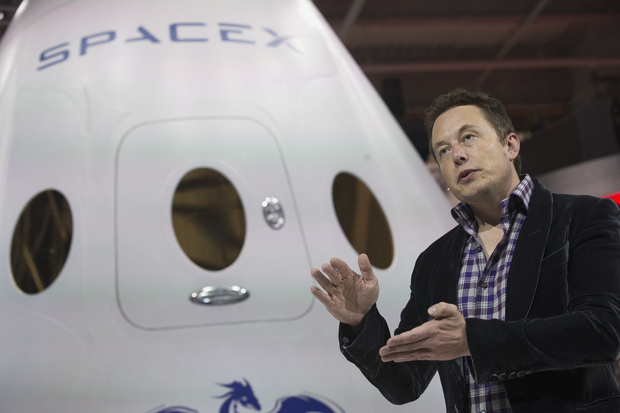
WANT TO LIVE ON MARS WITH 1M OF YOUR CLOSEST FRIENDS?
It won’t be easy or safe, but Elon Musk is developing tech to colonize Mars in 100 years
You might think Elon Musk, the CEO of SpaceX, might dream of putting an astronaut on Mars. But the high tech entrepreneur envisions the day when there is a working, thriving, self-sustaining civilization of a million people or more on Mars.
Musk has faith his dream will turn into reality, maybe in 100 years or less.
He’s already started figuring out and building the technology that would be needed to transport hundreds of people and the equipment required to build habitats, greenhouses, iron foundries and propellant plants on the Red Planet.
“Why go anywhere?” Musk asked during a speech Tuesday at the International Astronautical Congress in Guadalajara, Mexico. “There really are two fundamental paths. One path is we stay on Earth forever, and there will be an eventual extinction event. The alternative is to become a multi-planet species. I hope you would agree that is the right way to go.”
Pointing to a massive image of Mars, he added, “That’s what we want.”
Musk is no stranger to big ideas. Aside from helping to create online payments company PayPal, he also founded Tesla Motors, the electric car company.
Musk is also the founder and CEO of SpaceX, the first commercial company hired by NASA to ferry cargo to the International Space Station.
“As we show that this is possible, that this dream is real and not just a dream but something we can make real, I think support for it will snowball over time,” he said in his speech, which was webcast. “We’re trying to make it such that anyone can go. … Life needs to be more than just solving problems every day. You need to wake up and be inspired by the future and wake up and want to live.”
Musk said he wants to build a system where nearly anyone could go to Mars, but it must be understood that it will be a dangerous journey.
“I think the first journeys to Mars are really going to be really very dangerous,” he said. “The risk of fatality would be very high. There’s no way around it. So I would not suggest sending children. It would be, basically, are you prepared to die? OK, then you’re a candidate for going.”
He added that he’s not concerned about who gets to Mars first and might only recommend a few days of training before anyone departs.
“The thing that really matters is making a self-sustaining civilization on Mars as fast as possible,” Musk said. “This is not about everyone moving to Mars. It’s about being multi-planetary. The life span of human civilization will be much greater if we’re a multi-planet species.”
Musk wants to send two cargo ships to Mars by 2020, carrying payloads of equipment and supplies.
“We want to establish a steady cadence that there’s always a flight leaving, like a train leaving the station,” he said. “With every Mars rendezvous, we will be sending a Dragon [the SpaceX cargo craft] to Mars, so if people are interested in putting payloads on Dragon, they can count on a ship delivering a transport of two or three tons of useful payload to the surface of Mars.”
Then there will have to be a spaceship.
Musk envisions a spaceship that initially can carry 100 people, along with their belongings and the equipment and supplies needed to build propellant factories, foundries, greenhouses and housing.
The spaceship would be about 162 feet long, about half the size of a football field. It would be about 56 feet in diameter and would carry 450 tons of cargo on its long journey to the Red Planet.
Don’t worry about the travelers getting bored or feeling cooped up during the trip. Musk said they’ll have entertainment in the crew compartment, zero gravity games, movies, cabins and a restaurant. “It’ll be like really fun to go. You’ll have a great time,” he added.
Musk calculated that a million people would be needed to create a self-sustaining colony on Mars. To get them there, with 100 people traveling aboard one spaceship and spaceships only able to travel between the two planets every two years, he’ll have to send a fleet of spaceships at one time.
“Like on Battlestar Galactica, if you’ve seen that,” said Musk. “That’s a good show.”
According to Musk, it would take 20 to 50 trip of the Mars fleet to get a million men and women on the planet. And that could take 40 to 100 years from the time the first spaceships begin ferrying settlers to Mars.
How much would it cost to move to Mars? Well, if it was even possible today, Musk estimates it would cost about $10 billion per person. A little steep.
However, he said he hopes to get that cost figure down to $200,000 per person by the time the project is in full swing, and eventually down to $100,000 per ticket.
There are several technological necessities that need to be developed before another planet can be colonized.
The spacecraft, which will use solar arrays to boost its power, will need to be fully reusable so Mars doesn’t become littered with expensive and useless space vehicles.
Those spacecraft also will have to be refilled in orbit and methane-based propellant will need to be made on Mars so the spacecraft won’t have to carry the fuel with them, which would be unwieldy and expensive.
“We’re going to try to make as much progress as we can on the elements of the interplanetary transport booster and spaceship,” Musk said. “Hopefully we’ll be able to complete the first spaceship in maybe about four years and start doing suborbital flights with that. Should have enough capability to even go to orbit. We can’t get back but we could get to orbit.”
He added that developing a new rocket booster should be relatively straightforward since SpaceX engineers can scale up their Falcon 9 booster. “We don’t see a lot of show stoppers there,” Musk said.
He also noted that Mars settlers would be able to use water ice on the planet, could use solar panels to generate energy and should be able to grow their own food.

TESLA TO BEGIN TAKING ORDERS FOR ITS SOLAR ROOF SHINGLES
A solar-shingle roof is expected to cost no more than a standard roof
Tesla CEO Elon Musk revealed his company will begin taking orders in April for its latest product: roof shingles that are tougher than standard roof coverings and can enable an energy-independent building.
In October, Tesla unveiled four different solar roof tiles that the company plans to tie tightly into its manufacturing and sales of household and commercial battery systems; the tiles can generate power, the batteries store it and then that electricity is made available for powering a home, as well as charging your electric car.
 Twitter
TwitterThe shingles will begin shipping in volume this summer, beginning with the shingle the company expects to be the most popular; that version will be followed three months later by the next type and so on.
The solar roof tiles are being manufactured by SolarCity, which Tesla bought last year, and will be sold by Tesla Energy, a subsidiary of Tesla that also sells its home/business battery systems.
 Tesla Energy
Tesla EnergyTelsa Energy’s solar roofs will come in four types: Textured Glass Tile, Slate Glass Tile, Tuscan Glass Tile, and Smooth Glass Tile, and each is more durable than conventional roof tile, Musk said.
Tesla’s grand vision is to sell solar roofs that produce energy stored in its lithium-ion home and commercial battery systems and that can charge its all-electric vehicles.
Musk did not disclose what, if any, price premium the tiles would have over standard rooftop solar panels sold by SolarCity, which it will continue to sell. Solar Panels will be targeted at homes with new or serviceable roofs, while the solar tiles will be targeted at new construction or replacement roofs.
 Tesla Energy
Tesla Energy Tesla Energy
Tesla Energy“The cost will obviously vary according to the size of the house and the difficulty of the installation, but the important thing is the apples-to-apples comparison to a regular roof, we’re confident will be at least at or slightly below the cost of a regular roof,” Musk said during a November shareholders meeting. “The electricity is just a bonus.”
Because they’re made with glass, Musk said the shingles could last “quasi-indefinitely,” even in harsh northern regions, with a 50-year lifespan possible.
“The goal is to have solar roofs that look better than a normal roof, generate electricity, last longer, have better insulation and actually have an installed cost that is less than a normal roof plus the cost of electricity,” Musk said at the time the shingles were announced.
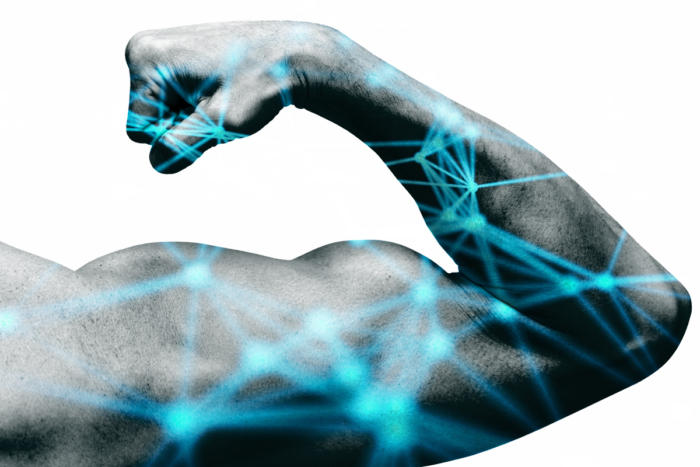
THE 10 MOST POWERFUL COMPANIES IN ENTERPRISE NETWORKING
Here’s our ranking of the top 10 network-gear vendors that serve corporate needs
There is no shortage of vendors competing for business at every part of the enterprise network – every vertical, every size business, from the edge to the core. None are created equal, but a few have separated themselves from the pack to become the 10 most powerful.
This is Network World’s understanding of the most powerful enterprise networking companies, which we based on our own research, consultations with trusted industry analysts and the work of our in-house journalists. For our purposes, we thought of power mostly as market share in key areas of the enterprise networking marketplace – specifically core networking, monitoring and management, WLAN and the edge, though we did consider their technology bases and important market factors as well. Enjoy.

Why they’re here: It was ever thus – Cisco remains the biggest single player in enterprise networking, and it’s not particularly close. The company offers one-stop shopping for almost anything you could need for your network and ensures that its products play nicely with each other.
Sure, they might not play so nicely with other people’s gear, and some of the price tags might make your eyes water, but Cisco continues to have a strong, reliable technology base and is the company to beat in the most important areas of enterprise networking.
Recent power moves: Earlier in 2017, Cisco snapped up data science and analytics firm Saggeza, SD-WAN player Viptela, and won a legal battle with rival Arista over a patent lawsuit.
By the numbers: 60 – Cisco maintains a 60% market share in the routing and switching market, according to the most recent numbers from IDC.
Outlook: Cisco has challengers on many fronts, some of which address their particular parts of the network more effectively than Cisco does. But nobody can claim to offer the same breadth of solutions as enterprise networking’s 800-pound gorilla, and the future is still pretty bright for Cisco.

Why they’re here: Aruba is the biggest name that isn’t named Cisco in the wireless LAN space, and the only other company to occupy the “leaders” section of Gartner Research’s latest Magic Quadrant report for wired and wireless LAN infrastructure.
Aruba, acquired by HP months before the company split into two entities in late 2015, is now the wireless arm of HPE – former CEO Dominic Orr joked that Aruba actually acquired HP Networking, not the other way around. It accounts for about 20% of worldwide wireless revenue share, according to Gartner.
Recent power moves: Lately, Aruba’s been pushing into the core switching market, releasing new hardware to go with its ArubaOS-CX operating system, which it bills as an all-in-one solution for visibility and management for an increasingly IoT-heavy enterprise network.
By the numbers: 7.5 million – The company’s partnering with the Texas A&M Transportation Institute for a tracking and traffic-flow optimization project that will affect the College Station campus’s 7.5 million annual riders.
Outlook: The foray into the core switch market could radically affect Aruba’s trajectory, though its position in the WLAN market is unlikely to change as a result. Still, the recent news from IDC that the company’s market share shrank in its latest quarterly report, in a period where the global WLAN market grew, might be a cause for minor concern.

Why they’re here: Juniper is a perennial contender and one of two big-name foils to Cisco in the data-center networking sector. Their data-center solutions are nicely integrated, well-made and generally thought to play nicer than Cisco with third-party products.
Juniper was faster on the uptake than the competition was when it came to mesh networks and other next-gen network topologies, and the company’s software is particularly well-regarded, tending toward open frameworks that integrate smoothly with other parts of the network.
Recent power moves: The company hired a new CTO, former Googler Bikash Kolay, and announced that it had beat its earnings targets for Q2 of this year.
By the numbers: 3.5 – Juniper clawed out 3.5% annual growth in the switching and routing market in 2016, according to IDC.
Outlook: The company lost a small amount of market share in 2016, according to IDC, but its trajectory looks like an upward one, and analysts believe Juniper is well-positioned to succeed in the changing enterprise networking market.

Why they’re here: Huawei hits a lot of segments in the enterprise networking market, from core networking to WLAN to WAN. (It also makes approximately everything else, including smartphones and tablets.) The company’s presence in the U.S. has been a bit constrained thanks to questions about the security of its products and its relationship to the Chinese government, but there are no such constraints in many other markets around the globe.
Put simply, Huawei’s looking to become a Chinese Cisco. The company is second only to Cisco in core switching and routing market share, and in third place behind Cisco and HPE/Aruba in WLAN. So it certainly seems to be on the way.
By the numbers: 77 – Huawei’s share of the WLAN market grew 77% between 2015 and 2016, according to the latest available numbers from IDC.
Outlook: It’s hard to pick against a company that’s trending up as sharply as Huawei across critical enterprise networking market segments. Huawei’s struggles to break into the lucrative U.S. market may not go away, but given its rate of success elsewhere, it may not matter that much.

Why they’re here: Arista is tightly focused on data center networking, and it’s one of the top companies in the world in that area. It’s the only company to share the “leaders” quadrant with Cisco in Gartner’s core routing and switching Magic Quadrant, and within that space, its offerings are diverse and flexible.
The elephant in Arista’s room, however, is a legal case for patent infringement brought against it by Cisco, which isn’t going well for Arista. It’s not going to put the company out of business or anything, but it’s a pretty serious stain on Arista’s public image and a headache for its product design.
Recent power moves: Arista’s latest releases – new (merchant silicon!) hardware in its R series and software upgrades – have been lauded as among the most capable on the market.
By the numbers: 33 – IDC says that the company’s been growing fast, to the tune of 33% in the core networking market over the course of 2016.
Outlook: A lot depends on the eventual fallout of Arista’s legal battle with Cisco. Like we said, the company’s been growing like a weed lately, but the courtroom setbacks are likely to slow that down significantly.

Why they’re here: Two main reasons. For one thing, there’s a good argument to be made that VMware’s virtualization and cloud products are some of the most important networking workloads out there, and that the company – owned since late 2016 by Dell/EMC – is therefore among the most influential in the enterprise networking sector.
However, with its NSX network virtualization product, VMware is also directly, not indirectly, a mover and shaker in software-defined networking. Compatible with most big-name hardware, NSX lets users manage multiple cloud environments from a single console.
NSX may have its detractors – plenty of ground-level network admins don’t like it, since it’s hard to “see” what’s happening in a virtual overlay – but it also has applications in security, and the user base could be set to grow.
Recent power moves: VMware extended its potential use cases for NSX in February by rolling out NSX-T 1.1, a version of the software that works with non-VMware cloud and virtualization environments.
By the numbers: 646 million – IDC figures show that VMware accounts for $646 million in annual cloud management systems software revenue, almost double the amount of IBM, its closest competition.
Outlook: There’s something Cisco-esque about VMware, even if its ubiquity isn’t so focused on the enterprise network itself. Its core technology means that it’s going to be a company many networking pros will have to deal with for the foreseeable future.

Why they’re here: Riverbed, thanks in part to a years-long series of acquisitions and mergers, is the ruler of the roost for important secondary networking product areas – WAN optimization and application performance management in particular.
It’s been focused lately on integrating a diverse set of management and visibility tools into a coherent suite, and on broadening those capabilities into something more than a set of ancillary network tools.
Recent power moves: The company’s latest acquisition – of edge wireless gear manufacturer Xirrus – signals an aggressive shift of direction, with Riverbed executives making bellicose noises about challenging Cisco in certain WLAN markets at a company event in April.
By the numbers: 3.6 billion– Ever since a 2015 go-private deal in which equity firm Thoma Bravo bought Riverbed for about $3.6 billion, the company hasn’t been disclosing how much it paid for any of its numerous acquisitions.
Outlook: Riverbed’s move to do LAN along with WAN is ambitious, as is the company’s recent rhetoric, but it’s unproven in this new market, and only time will tell for sure.

Why they’re here: NetScout is a network performance monitoring and diagnostic company with a major presence in the large enterprise and service provider segments. It’s still going through some consolidation, given the 2015 deal that saw it combine with Fluke Networks, Arbor Networks and VSS Monitoring in a complicated not-actually-a-merger.
The combined company has a huge market presence in network performance monitoring and diagnostics (NPMD, and is one of the top vendors for hyperscale data centers. It’s one of just three leaders in Gartner’s most recent NPMD Magic Quadrant, despite the fact that it’s suing Gartner over a previous report. Networking pros like the ability to do root-cause analysis across multiple parts of the infrastructure and view historical data quickly to find problems.
Recent power moves: NetScout announced that it had reached a milestone in the integration of its real-time information platform with Arbor’s threat-analysis tool, strengthening its network monitoring and security capabilities.
By the numbers: 500 million+ – Gartner says NetScout has the biggest NPMD revenues of anybody in the market, between $500 million and $750 million per year.
Outlook: NetScout isn’t as much of a household name as some of the others on this list, but it’s a powerhouse company with a big user base and a lot of well-regarded tech. It still needs to make progress on integration, but the future looks pretty solid.

Why they’re here: The name makes it sound like a company that markets energy drinks, but Extreme Networks is suddenly a company with an impressively complete portfolio of enterprise networking offerings.
Having bought up Brocade’s data-center business from Broadcom, nabbed Avaya’s networking business and acquired Zebra Technologies’ LAN business in 2016, Extreme’s existing switching and routing now forms the basis of a surprise up-and-comer on the enterprise networking scene.
Recent power moves: The aforementioned acquisition of Brocade’s core routing business is hard to top.
By the numbers: 100 million –Extreme paid $100 million for the just-closed acquisition of Avaya’s core networking business.
Outlook: Like several other companies on the list, Extreme is rolling the dice with a raft of high-profile acquisitions and a move toward taking a bigger bite out of the enterprise networking market.

Why they’re here: It’s a bit odd to refer to Dell, one of the most recognizable American tech brands, as an outsider, but here we are. Somewhat unusually for an older company, Dell’s recognized as a data-center networking “visionary” by Gartner’s latest Magic Quadrant report, a fact that has everything to do with the company’s welcome of open standards and highly interoperable hardware and software.
While the company’s hardware may not have the same reputation as some of its competitors’, the fact that a wide range of different software can be run on it means that there’s a great deal of flexibility – a strong value proposition for users looking to embrace more virtualized network technologies. Pretty good fit for a company that also technically owns VMware, although the latter firm still operates with a high degree of independence.
Recent power moves: Dell recently beefed up its channel partner program – something Gartner cited as a potential weakness.
By the numbers: 67 billion –The company ponied up $67 billion for EMC, which still largely owns VMware.
Outlook: Dell’s using both its investments in VMware and its own open networking gear to offer an attractive option to companies that want to get into advanced technologies like hyperconverged infrastructure.

THE BEST FREE BI TOOLS, 2018
Business intelligence platforms can help enterprises analyze data from various sources to inform decision-making. The six free tools highlighted here are among the best and most popular today.
Business intelligence (BI) software is designed to help enterprises discover and visualize their data to drive better business outcomes. These widely deployed applications come in various forms, including high-priced offerings, but many businesses are well served by free services that incorporate most of the key features organizations need.
There are many factors and options to consider when evaluating BI tools because some are better suited to particular uses, while others require more extensive coding skills or a background in data science.
We’ve reviewed dozens of providers to identify the best free BI software on the market today. After weighing their strengths and limitations, studying reviews by industry leaders and analyzing rankings from various research firms, we’ve selected the following six apps (presented in alphabetical order) to help you find the solution that’s best for you.
BIRT
BIRT is an open source business intelligence platform that has been downloaded more than 12 million times and is supported by more than 2.5 million developers from at least 157 countries, according to the Eclipse Foundation, a non-profit consortium of software vendors that supports the project. The BIRT dashboard can create various reports that visualize data and accomplish more advanced tasks such as grouping on sums and percentages of overall tools. Other reporting features include lists, charts, crosstabs, letters and documents and compound reports.
BIRT, which is used by industry stalwarts like Cisco and IBM, can also be embedded in many other business applications to extend the capabilities of BIRT’s report engine and charting engine within applications that use Java. BIRT requires extensive coding skills so organizations that don’t have those resources might be better served by another app.
http://www.eclipse.org/birt/
Google Analytics
Google Analytics, it should come as no surprise, is one of the most popular business intelligence platforms on the market today. More than half of all websites use the service, including about 70 percent of the top 10,000 sites, according to various firms that track online software usage. The cloud-based app features various visualization methods and creates data summaries in interactive dashboards. The service is especially powerful for companies that specialize in marketing or advertising and are particularly interested in tracking click-throughs and other visitor metrics to determine what content is performing above and below objectives.
Core features of Google Analytics include data collection and management (collection APIs, tag management, configuration APIs, custom variables, data import and user access controls); data analysis, visualization and reporting (data access, filtering and manipulation, funnel analysis, mobile-app reporting, real-time reporting, segmentation and user flow reporting); and data activation (audience demographics, intelligence and anomaly detection, multi-touch attribution, predictive analytics, publisher integrations, remarketing integrations and app notifications).
https://www.google.com/analytics/
IBM Watson Analytics Free Edition
Thanks to a massive and sustained advertising campaign, IBM Watson Analytics is one of the most well-known business intelligence programs on the market. The free version of IBM Watson Analytics features a full range of self-service analytics, including access to data refinement and warehousing services. The platform is driven by a powerful analytics engine combined with natural language processing capabilities that make business intelligence customizable and easy to learn.
The smart assistant can help businesses and professionals from various disciplines and with a variety of skill sets, including those with data science and data visualization skill sets. IBM Watson Analytics can also help users discover insights, predict outcomes, visualize results, create reports and collaborate with others. Watson Analytics Free Edition only supports flat files with no more than 100,000 rows and 50 columns. It is also limited to a total data storage of 500 MB.
https://www.ibm.com/watson-analytics
Jaspersoft Community
Jaspersoft offers five of its open source programs for free via a community program. JasperReports Server, the most popular and feature-rich of the programs, is a standalone and embeddable application that provides reporting and analytics for enterprises. The software includes extensive database support, flexible server architecture, centralized reporting and analytics, secured data access and auditing, and online analytical processing analysis across multiple attributes and time periods.
Tibco, an infrastructure software vendor that acquired Jaspersoft in 2014, boasts an impressive list of customers, including Time Warner Cable, the government of British Columbia, Groupon and Vanderbilt University. Other free community editions of Jaspersoft include JasperReports Library, Jaspersoft ETL, Jaspersoft Studio and Visualize.JS.
https://community.jaspersoft.com/
Microsoft Power BI
Microsoft also provides a free version of its business intelligence program, Power BI Desktop, which includes up to 1 GB of data storage and 10,000 rows of data per hour. The cloud-based analytics service is designed for non-technical professionals who want to keep tabs on their business by exploring data more deeply through interactive visual reports, built-in connectors and reports from a wide variety of sources.
Microsoft Power BI features dozens of data connectors so users can incorporate information from various sources into their queries. The platform also empowers businesses to transform CSV data and Excel spreadsheets into visually appealing reports that can be shared with others or published online. Finally, Microsoft Power BI features an impressive number of customizable visualizations so users can arrange data in all types of charts, from bubbles to table heatmaps, tornado charts, aster plots, histograms, cards and more.
https://powerbi.microsoft.com/en-us/
Qlik
Qlik offers free versions of three of its most robust programs — QlikView Personal, Qlik Sense Desktop and Qlik Sense Cloud. The personal, or free editions, are best for solo use because collaboration and sharing is limited, but they have many of the same core functions as the full versions. QlikView is designed to help businesses consolidate data from multiple sources, explore associations in the data, visualize the results and discover insights that can lead to better decisions.
Qlik Sense enables professionals to create personalized visualizations, reports and dashboards in a drag-and-drop interface. The platform also features data compression, a rarity in business intelligence software, that can compress in-memory data to a tenth of its initial size so users can complete operations faster.
https://www.qlik.com/us
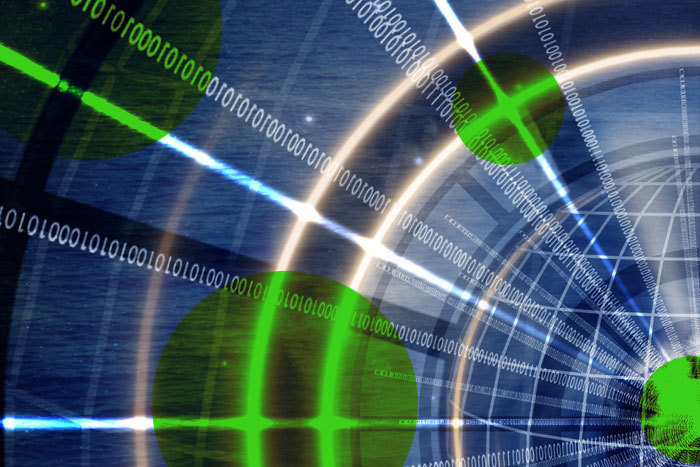
WHAT IS VIRTUALIZATION?
The importance and applications of virtualization extend far beyond virtual machines
No advance in information technology in the past six decades has offered a greater range of quantifiable benefits than has virtualization. Many IT professionals think of virtualization in terms of virtual machines (VM) and their associated hypervisors and operating-system implementations, but that only skims the surface. An increasingly broad set of virtualization technologies, capabilities, strategies and possibilities are redefining major elements of IT in organizations everywhere.
Virtualization definition
Examining the definition of virtualization in a broader context, we define virtualization as the art and science of making the function of an object or resource simulated or emulated in software identical to that of the corresponding physically realized object. In other words, we use an abstraction to make software look and behave like hardware, with corresponding benefits in flexibility, cost, scalability, reliability, and often overall capability and performance, and in a broad range of applications. Virtualization, then, makes “real” that which is not, applying the flexibility and convenience of software-based capabilities and services as a transparent substitute for the same realized in hardware.
Virtual machines
Virtual machines trace their roots back to a small number of mainframes from the 1960s, most notably the IBM 360/67, and became an established essential in the mainframe world during the 1970s. And with the introduction of Intel’s 386 in 1985, VMs took up residence in the microprocessors at the heart of personal computers. Contemporary VMs, implemented in microprocessors with the requisite hardware support and with the aid of both hypervisors and OS-level implementations, are essential to the productivity of computation everywhere, most importantly capturing machine cycles that would otherwise be lost in today’s highly-capable 3-plus GHz processors.
VMs also provide additional security, integrity, and convenience, and with very little computational overhead. Moreover, we can also extend the concept (and implementation) of VMs to include emulators for interpreters like the Java Virtual Machine, and even full simulators. Running Windows under MacOS? Simple. Commodore 64 code on your modern Windows PC? No problem.
What’s most important here is that the software running within VMs have no knowledge of that fact – even a guest OS otherwise designed to run on bare metal thinks its “hardware” platform is exactly that. Herein lies the most important element of virtualization itself: an incarnation of the “black box” approach to the implementation of information systems that relies on the isolation enabled by APIs and protocols. Think of this in the same context as the famous Turing Test of machine intelligence – applications, which are, after all, the reason we implement IT infrastructure of any form in the first place – are none the wiser about exactly where they’re running. And they don’t need to be, enhancing flexibility, lowering costs and maximizing IT RoI in the bargain.
We can in fact trace the roots of virtualization to the era of timesharing, which also began to appear around the late 1960s. While mainframes certainly weren’t portable, the rapidly increasing quality and availability of dial-up and leased telephone lines and advancing modem technology enabled a virtual presence of the mainframe in the form of a (typically dumb alphanumeric) terminal. Virtual machine, indeed: This model of computing led – via advances in both the technology and economics of microprocessors – directly to the personal computers of the 1980s, with local computation in addition to the dial-up communications that eventually evolved into the LAN and ultimately into today’s transparent, continuous access to the Internet.
Virtual memory
Also evolving rapidly in the 1960s was the concept of virtual memory, arguably just as important as virtual machines. The mainframe era featured remarkably expensive magnetic-core memory, and mainframes with more than even a single megabyte of memory were rare until well into the 1970s. Virtual memory is enabled by, as is the case with VMs, relatively small additions to a machine’s hardware and instruction set to enable portions of storage, usually called segments and/or pages, to be written out to secondary storage, and for the memory addresses within these blocks to be dynamically translated as they are paged back in from disk. Voilà – a single real megabyte of core memory on an IBM 360/67, for example, could support the full 24-bit address space (16 MB) enabled in the machine’s architecture – and, properly implemented, each virtual machine could in addition have its own full complement of virtual memory. As a consequence of these innovations, still hard at work today, hardware otherwise designed to run a single program or operating system could be shared among users even with simultaneous multiple operating systems and massive memory requirements beyond the real capacity provisioned. As with VMs, the benefits are numerous: user and application isolation, enhanced security and integrity, and, again, much improved RoI. Sounding familiar yet?
Virtual desktop infrastructure (VDI)
After virtual machines and virtual memory, and the availability of these capabilities in low-cost microprocessors and PCs, the next advance was the virtualization of the desktop and thus the availability of applications, both single-user and collaborative. Again, we must return to the timesharing model introduced above, but in this case we are emulating the desktop of a PC on a server and essentially remoting the graphics and other user-interface elements over a network connection, to an appropriate software client and often to an inexpensive and easy-to-manage-and-secure thin-client device. Every major operating system today supports this capability in some form, with a broad array of add-on hardware and software products as well, including VDI, the X Windows system, and the very popular (and free) VNC.
Virtual storage
The next major advance, expanding rapidly today, is the virtualization of processors, storage, and applications into the cloud as well, provisioning whatever capabilities might be required at present and then easily adding to and scaling up the arsenal with essentially no effort on the part of IT staff. Savings in physical space, capital expense, maintenance, downtime due to outages, the labor-intensive expense of troubleshooting (hopefully) infrequent but serious performance issues and outages, and many additional costs can essentially pay for service-based solutions resident in the cloud. Storage virtualization, just for example, offers numerous opportunities here. While disk drives can be virtualized as RAM disks, virtual drives mapped into network-based storage, and even integrated as single-level storage hierarchies that stretch back to IBM’s System/38 of almost 40 years ago, we believe that cloud-based implementations of not just backup, but also primary, storage will become more common as both wired and wireless networks provide a performance floor of 1 Gbps – a capability already common in Ethernet, 802.11ac Wi-Fi, and one of the very definitions of upcoming 5G deployments.
Virtual networks
And speaking of networks, even these are being virtualized to an increasing degree, with network as a service (NaaS) now a viable and even desirable option in many cases. This trend will accelerate with the continuing adoption of network functions virtualization (NFV), which is at least initially of greatest interest to carriers and operators, especially in the cellular space. Significantly, network virtualization creates a real opportunity for carriers to expand their range of services, augment capacity, and increase their value and even stickiness for organizational customers. It is also likely that, over the next few years, an increasing number of end-user organizations will apply NFV in their own networks and even in hybrid carrier/organizational networks (again, note the stickiness factor here). In the meantime, VLANs (802.1Q) and virtual private networks (VPN) add their own broad set of benefits to the many applications and benefits of contemporary virtualization.
Virtualization cost savings
Even with the broad array of powerful and capable virtualization technologies available, it’s ultimately the economics of broad-scale functional virtualization that seals the deal. The competitive nature of the rapidly-evolving cloud-based services business model means that the traditional, labor-intensive operating expense incurred by customer organizations will likely decline over time, as service providers ride their own experience curves, develop new multi-client economies of scale, and offer lower prices to end-user organizations simply as a result of marketplace competition.
It’s also easy to increase reliability and resilience by employing multiple cloud-services suppliers on a fully redundant or hot-standby basis, eliminating the possibility of single points of failure. We see the capital-expense elements of IT budgets increasingly evolving into operating expense, this time being spent on service providers rather than more equipment, facilities, and local staff. Thanks again to the power of today’s microprocessors, advances in system and solution architecture, and, again, the dramatic improvement in the performance of both LANs and WANs (including wireless), almost every element of IT today can indeed be virtualized and even implemented as on-demand, scalable, cloud-based services.
While it has often been described as such, virtualization itself is not a paradigm shift. What virtualization does, in any of its forms, is to enable IT activities across a very broad range of requirements and opportunities – as we have discussed here – to be performed more flexibly, efficiently, conveniently and productively. Based on the strategy of virtualizing much of IT into cloud-based services, virtualization is best thought of today as an alternative operating model with economic advantages that obviate the need for traditional implementations.
This increasing virtualization of organizational IT is in fact guaranteed thanks to an essential, and, again, fundamentally economic inversion of the operational model of IT tracing its roots back to the beginning of commercial computing. In the early days of computing, our interests were necessarily focused on expensive and often-oversubscribed hardware elements, like mainframes, the intrinsic costs of which motivated the initial forays into virtualization noted above. As hardware became cheaper, more powerful, more cost-effective, and quasi-standardized, the focus shifted to applications running in essentially-standardized and virtualized environments, from PCs to browsers.
The net result of this evolution is where we’ve arrived today. Whereas computers and computing used to be at the core of IT, we have shifted to a focus on information and making that information available anytime and anywhere. This “infocentricity” is the ethic and overall motivation that has driven the evolution of the mobile and wireless era itself – getting the information end-users need into (quite literally) their hands, wherever and whenever such is required.
So, what started as a way to make more efficient use of a slow, expensive mainframe has evolved into what is now well on its way to becoming the dominant strategy for defining the future of IT itself. No innovation in IT has had a greater impact than virtualization – and, with the shift to infrastructure virtualized in the cloud, we’re really just getting started.
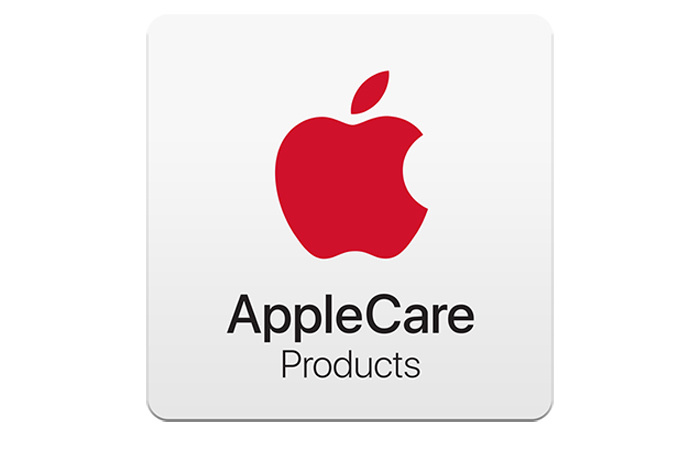
APPLECARE+: EVERYTHING YOU NEED TO KNOW ABOUT APPLE’S EXTENDED WARRANTY PROGRAM
Your Apple gear wasn’t cheap. And if you drop your iPhone, your iPad stops turning on one day, or your Mac’s hard drive just ups and dies on you, getting it repaired probably won’t be cheap either.
Apple includes a one-year limited warranty with all hardware so if there’s a manufacturing defect, you’ll be covered. To also protect against accidental damage, plus extend the original warranty for longer and enjoy free tech support, you can opt to purchase AppleCare+. Here’s what it is, what it covers, and what you can expect to pay. Is AppleCare+ worth it? Only you can decide for your own situation, but this should be everything you need to know to make a smart choice.
General AppleCare+ information
If you’ve never even heard of AppleCare, start here! Otherwise, feel free to skip to the sections that cover your particular devices.
What is AppleCare+? How is it different from the warranty Apple products come with?
AppleCare is Apple’s term for its warranty programs. Every Apple device comes with a certain stretch of AppleCare warranty service and phone/chat support for free, typically one year for the warranty and 90 days of phone support. You can pay to extend that protection for longer, which is called AppleCare+.
Do I have to buy AppleCare+ at the same time as the product?
No. If you already know you want it, buying AppleCare+ with the product is a good idea, just so you don’t forget. When you’re shopping at the Apple store and Apple.com, you’ll be offered AppleCare+ at checkout, and authorized Apple resellers can offer AppleCare+ too.
But you have some time. Generally you get 60 days from the purchase date to buy AppleCare+ (only 30 days if you’re in Japan), and Apple has a page where you can check your exact device’s eligibility.
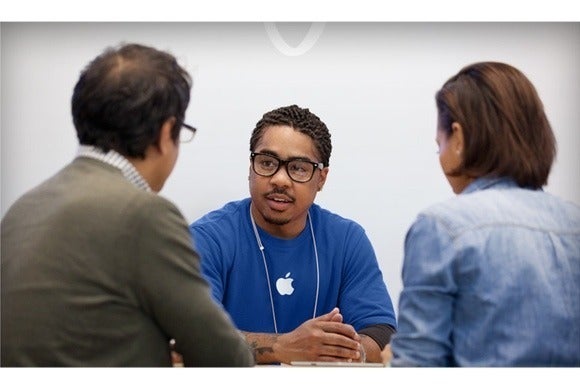 Apple
AppleStill, to buy AppleCare+ after the fact you generally have to run a diagnostic test on the device in question, so Apple knows it’s in good working order. And no matter when you buy your AppleCare+ plan, the coverage starts from the day you bought your device. So you don’t get an “extra” two months of coverage if you wait two months to buy the plan.
How do I buy AppleCare+ for products I didn’t buy directly from Apple?
The easiest way is online. Apple’s site has a page to Check Your Service and Support Coverage. Enter your device’s serial number here, and it’ll tell you if you can still buy AppleCare+ and walk you through the process of purchasing and registering your plan.
Keep in mind that buying an AppleCare+ plan after the fact often means you have to complete a diagnostic test on the device. After all, Apple has to make sure you’re not trying to buy coverage on a device that’s already broken. So do it right away, just in case.
Can you buy AppleCare+ for refurbished products?
You can! Apple offers a range of refurbished items on its website, and they’re all backed by the same one-year warranty as new products. Plus, you can buy AppleCare+ for a refurbished item just as you can with a new one.
How do I check how much time is left on my AppleCare plan?
Head to Apple’s Check Your Service and Support Coverage page, and enter your device’s serial number. You’ll find out how much time you have left on your AppleCare plan, and if you can still buy AppleCare+ for this device.
If there’s no Apple store near me, is AppleCare+ a bad idea?
No, you can still use AppleCare+ if you can’t make it to the Apple store. You have several options, actually.
- Apple retail stores. If you can get to an Apple store, you can even make a reservation for AppleCare+ service.
- Drop off at the UPS Store. Apple can provide you with a Repair ID number for an iPhone, iPad, or iPod needing service, and you can take it to any UPS Store in the U.S., which will ship the device to Apple at no cost to you. When Apple finishes the repair, you get the device back in the mail, again with no shipping fee.
- Direct mail. Alternatively, Apple will send you a box and shipping labels for you to ship any Apple product back to them for repair. Apple pays the shipping both ways.
- Onsite service. If the problem is with a desktop Mac, Apple can sometimes even send an authorized repair technician to you.
- DIY. If the problem is relatively small, Apple can sometimes just send you a part, like a new iPhone charger or Apple TV remote.
How am I supposed to survive without my device while Apple is repairing it?
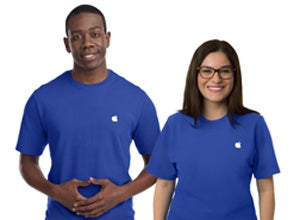 Apple
AppleApple offers an Express Replacement Service for the iPhone, iPad, and Apple Watch. When you use Express Replacement, Apple goes ahead and sends you a new device right away, and you don’t have to mail in your broken device until you receive it. Conditions apply, but ask Apple about it when you contact them and they can let you know if you qualify.
What if I sell the product before AppleCare+ runs out?
AppleCare is transferable! If you’re selling an Apple product before the included AppleCare plan expires, the buyer gets the remaining protection. If you buy an extended AppleCare+ plan and then sell the product, the remaining time left in the AppleCare+ goes along with it. So AppleCare+ can be a selling point when you’re unloading your used devices on the secondary market!
To transfer an AppleCare plan, you have to provide the buyer with your proof of purchase (receipt), the plan confirmation and contract, and also notify Apple by email, fax, or mail. Apple needs to know the plan’s agreement number, the device’s serial number, and the new owner’s contact info. Full details are in the terms and conditions.
Does AppleCare cover loss or theft?
There is a special AppleCare+ with Theft and loss plan, but it’s only for the iPhone. This plan allows for two incidents of accidental damage, theft, or loss coverage.
Some cell carriers and third-party insurance companies offer plans that do cover loss or theft, but AppleCare+ only covers defects and accidental damage.
Is AppleCare+ only for U.S. customers?
No! Well, AppleCare+ plans for iPhone and iPad purchased in the United States and Canada are only valid in the United States and Canada, but other Apple devices (Apple Watch, Mac, iPod, Apple TV, and Apple displays) provide global coverage. Service options do vary between countries, but any AppleCare service is always performed by authorized techs with genuine Apple parts.
Obviously, you should always read the full agreement before you purchase any warranty or insurance.
Can I cancel an AppleCare+ plan?
Yes, you can. If it’s within 30 days of purchasing the plan, you’ll get a full refund minus any service you received. Outside of 30 days, you’ll get a prorated refund, minus any service, minus a fee of $25 or 10 percent of the prorated refund, whichever is less. Call Apple at 1–800-MY-APPLE to ask how.
AppleCare+ for iPhone
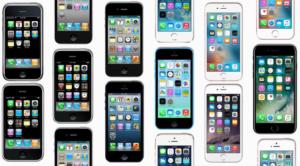 Apple
AppleThe iPhone is covered in glass, easy to drop, and goes everywhere with you. No wonder iPhones break so frequently! Here’s the skinny on buying some extra protection.
How much does AppleCare+ cost for iPhone?
It varies by the device. Here’s the pricing.
- iPhone 7 and 8: $129 for AppleCare+, $199 for AppleCare+ with Theft and Loss
- iPhone 7 Plus and 8 Plus: $149 for AppleCare+, $249 for AppleCare+ with Theft and Loss
- iPhone XS and XS Max: $199 for AppleCare+, $299 for AppleCare+ with Theft and Loss
- iPhone XR: $149 for AppleCare+, $249 for AppleCare+ with Theft and Loss
All AppleCare+ plans for iPhone include two years of coverage and tech support.
I bought my iPhone with the iPhone Upgrade Program. Doesn’t that have AppleCare+ included for free?
It’s included, but it’s not free. The cost of the two-year AppleCare+ plan is divided among the 24 loan payments you agree to pay. (But at least you aren’t charged interest.)
If you upgrade your phone after a year, your two-year loan starts over again, but you still get the second year of AppleCare+ on the new phone. Read the iPhone Upgrade Program terms for more detail. The iPhone Upgrade Program is a loan, so again, be sure to read all the fine print before you sign up.
What does AppleCare+ for iPhone cover?
For the iPhone, AppleCare+ extends your warranty coverage from one year to two, and extends phone and chat support from 90 days to the full two years as well.
You also get up to two incidents of accidental damage coverage for a relatively low service fee. If you’ve only damaged the screen, a screen replacement is only $29. But if the iPhone has other damage, the fee is $99. iPhones are eligible for the Express Replacement Service, letting you request a replacement device in the mail before you send your original damaged device in for repair.
So let’s say you drop your iPhone on the corner, which breaks the screen but also dents the enclosure enough that Apple can’t fix just the screen—that’s a $99 repair. If the screen shatters but the rest of the phone is relatively unscathed, $29.
The warranty against defects covers the phone as well as the battery and the included headphones and accessories. Accidental damage can include almost anything, such as water damage, drops, running the thing over, your kid pours paint into the Lightning port—as long as you only have two incidents (or less) in the two year coverage period.
What is AppleCare+ with Loss and Theft?
If your main concern is loss or theft, you have to opt specifically for the AppleCare+ with Theft and Loss plan. This plan allows for two incidents of accidental damage, theft, or loss coverage.
You might also want to check your homeowner’s and renter’s insurance policies to see if they cover stolen electronics. Some cell phone service providers’ own insurance plans cover loss and theft, but it’s relatively rare.
What about the iPod touch?
Yes, Apple offers AppleCare+ for the iPod touch. It’s $59 to extend the warranty from one year to two, with two years of tech support too. Up to two incidents of accidental damage are covered for a $29 service fee, plus tax.
Should I get it?
If you’re going to buy AppleCare+ on anything, it’s probably going to be your iPhone. But it’s not always a slam dunk.
For example, I broke my iPhone 7 screen, and Apple was able to do a same-day screen replacement at the Apple store. I don’t have AppleCare+, so Apple charged me the “full” price for the screen repair, which was $129. But if I’d paid $129 for AppleCare+ ahead of time, the repair would cost me $29. That means I actually paid less for the screen repair out of warranty. But if I broke the same iPhone again within the two years, the second $29 screen repair would put me way ahead.
Really it depends on how careful you are with your iPhone. Do you use a case? Avoid action sports? Rarely drop your phone? Or are you a total klutz who’s broken every phone you’ve ever owned? Be honest with yourself and proceed accordingly.
AppleCare+ for iPad
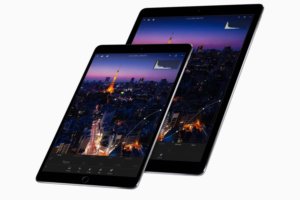 Apple
AppleWhether you agree that an iPad can replace a laptop, its AppleCare+ plan certainly is cheaper than AppleCare+ for a Mac—and iPads are eligible for Apple’s speedy Express Replacement Service too.
How much does AppleCare+ cost for iPad?
- iPad Pro: $99
- iPad and iPad mini 4: $69
What does AppleCare+ for iPad cover?
AppleCare+ extends an iPad’s hardware warranty from one year to two. Tech support is extended from 90 days to two years, so you can call or chat with an Apple rep to get help with iOS, iCloud, and Apple apps.
You also get two incidents of accidental damage coverage, with a service fee of $29 for a broken screen, or $99 for any other damage, plus tax. AppleCare+ covers the iPad as well as its battery and included accessories like the power brick.
What doesn’t AppleCare+ for iPad cover?
Loss and theft. The AppleCare+ with Theft and Loss plan is only available with the iPhone. Check with your homeowner’s or renter’s insurance to see if those policies offer you any protection.
Should I get it?
This answer might hinge on how you use your iPad. My iPad, for example, almost never leaves my house—but I also share it with a 6-year-old who doesn’t always treat it like an expensive and fragile device. Still, our iPad is mostly for entertainment, so I’m living (dangerously?) without AppleCare+.
On the other hand, if I was a road warrior with an iPad Pro that I relied on every day to make my living, I’d be more likely to shell out the $99 for AppleCare+, which, again, is cheaper than AppleCare+ for most iPhones or any Macs.
AppleCare+ for Macs and Apple displays
 Apple
AppleApple doesn’t sell its own Apple-branded displays anymore, and AppleCare+ for Macs might seem like a bargain if you’ve ever paid hundreds to get a laptop serviced—or overkill if you’re an iMac user who’s never run into a problem.
How much does AppleCare+ cost for Macs?
For Macs, AppleCare+ offers three years of service protection and phone support, and the price varies by model.
- Mac mini: $99
- iMac: $169
- iMac Pro: $169
- Mac Pro: $249
- MacBook: $249
- MacBook Air: $249
- 13-inch MacBook Pro: $269
- 15-inch MacBook Pro: $379
Apple also had a separate AppleCare+ plan for its desktop displays, like the Cinema Display and the Thunderbolt Display, but those displays are no longer sold.
What does AppleCare+ for Macs cover?
The plan extends the original warranty from one year to three years, which covers you for defects that aren’t your fault. Phone and chat support is extended from 90 days to three years as well.
AppleCare+ for Macs also includes two incidents of accidental damage for a lower service fee than you would pay for an out-of-warranty repair. If you damage just the screen or the Mac’s enclosure, it’s $99, and all other damage is $299, plus tax.
For Macs, your computer is covered, plus the battery, power adapter and other included accessories, RAM, AirPort, and even Apple’s USB SuperDrive.
What doesn’t AppleCare+ for Macs cover?
It doesn’t cover loss or theft. Your homeowner’s or renter’s insurance might, depending on your policy.
Should I get it?
For Macs, AppleCare+ makes more sense if you’re buying a laptop and you’re worried about the screen, or you just tend to be rough on your computers. Desktop Macs probably aren’t as important to cover, since the likelihood of, say, dropping one is a lot less. Still, Macs have a long life, so you may decide three years of (transferable) protection is worth the extra cost.
AppleCare+ for Apple Watch
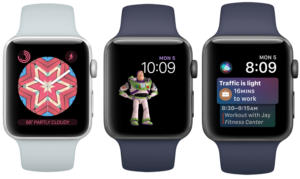 Apple
AppleApple offers two tiers of AppleCare+ for the Apple Watch. Since they cost so much, the special edition watches (Edition, Hermès, and ceramic) already come with two years of warranty support, AppleCare+ extends that to a third year.
How much does AppleCare+ cost for Apple Watch?
Either $49 or $99, depending on the model.
- The Series 3 watches in aluminum start at $329 for GPS, and $399 for GPS + cellular. AppleCare+ is $49, which extends the included one-year warranty to two.
- The aluminum Apple Watch Nike+ editions in Series 3 also start at $329 for GPS and $399 for GPS + Cellular. For $49, AppleCare+ extends the one-year warranty to two.
- The Apple Watch Edition Series 4 and Apple Watch Nike+ Series 4 start at $399. AppleCare+ is $79, extending the included one-year warranty to two.
- The Apple Watch Series 4 Hermès edition watches start at from $1,249. AppleCare+ is $99, which extends the two-year warranty to three.
What does AppleCare+ for Apple Watch cover?
The cheaper Apple Watches come with 90 days of tech support and a one-year limited warranty. AppleCare+ extends both to two years for $49.
The more expensive watches already include two years of limited warranty and tech support. A $99 AppleCare+ plan extends both for a third year.
All Apple Watches are eligible for Express Replacement Service, so you aren’t without an Apple Watch while you wait for your repair. The plan covers the watch, its battery, the magnetic charging cable, and the power adapter. Apple Watch Editions came with a fancy magnetic charging dock that’s also covered.
AppleCare+ for all Apple Watches covers up to two incidents of accidental damage. The service fees are $69 for regular and Nike+ models, and $79 for Edition and Hermès models, plus tax.
What doesn’t AppleCare+ for Apple Watch cover?
Loss and theft! Are you noticing the pattern?
Should I get it?
It’s pretty difficult to get an Apple Watch repaired anywhere but the Apple store, as we found out. The Apple Watch is designed to be tough, so most users hopefully shouldn’t have problems. But if you’re paranoid or accident prone, or you just love the idea of Express Replacement Service so you never miss a step, AppleCare+ is there.
AppleCare Protection Plan for Apple TV
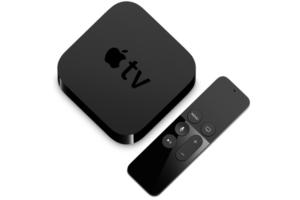 Apple
AppleYour Apple TV is probably the last thing you’d buy an extended warranty for, but Apple is happy to sell you one! Since it doesn’t cover accidental damage, they don’t even call it AppleCare+. It’s just the AppleCare Protection Plan for Apple TV.
How much is the AppleCare Protection Plan for Apple TV?
It’s only $29, both for the regular Apple TV and the brand-new 4K edition. That gets you two years of warranty coverage and tech support.
What does the AppleCare Protection Plan for Apple TV cover?
The Apple TV itself, the Siri Remote, and even the Apple AirPort router you use with it, if you bought it within two years of the Apple TV. Tech support by phone or chat includes help with setup, connecting to Wi-Fi, iCloud, renting or buying from iTunes, AirPlay, and even connecting to third-party streaming services.
What doesn’t it cover?
Loss and theft, including losing the remote. (But if the remote stops working, that’s covered.) There’s also no coverage for accidental damage (spills, drops, earthquakes, fires) or cosmetic damage. But it’s an Apple TV. It just sits there.
Should I get it?
Nah. I mean, you could. But you probably don’t need to, unless you really want the tech support.
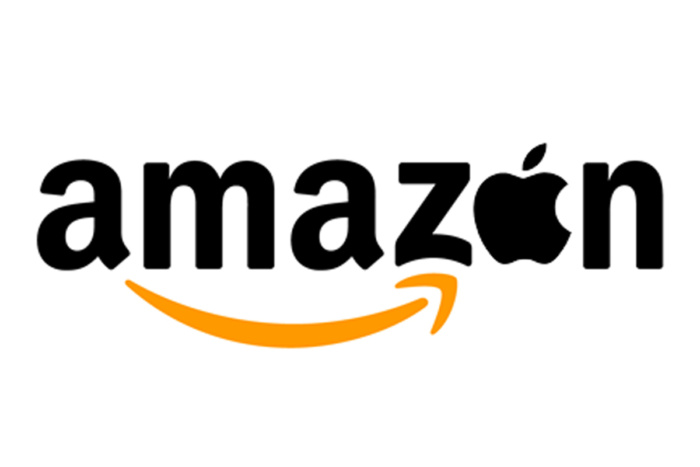
YOU’LL SOON BE ABLE TO BUY APPLE’S PRODUCTS ON AMAZON, BUT DON’T EXPECT ANY CRAZY LIGHTNING DEALS
Macs, iPhones, iPads, and everything else…except HomePod.
If you’re planning on buying an Apple product or three this holiday season, you’ll soon be able to buy them from the most popular online retailer in the world. As first reported by CNET, Amazon and Apple have finally struck a deal to sell Macs, iPads, iPhones, and everything else designed in Cupertino on the retail giant’s site.
While the partnership hasn’t officially been announced, Amazon confirmed to Macworld it will start selling the devices soon. In a statement, a spokesperson said: “Amazon is constantly working to enhance the customer experience, and one of the ways we do this is by increasing selection of the products we know customers want. We look forward to expanding our assortment of Apple and Beats products globally.”
Among the products being sold on the site will be Macs, iPads, iPhones, Apple Watches, and Apple TVs, as well as the iPad Touch, Beats products, and Apple-branded accessories, including Apple Watch bands. (Insert HomePod joke here.) Amazon will start offering the products “in the coming weeks,” which should be just in time for Black Friday.
But while Amazon has become synonymous with low prices (particularly when it comes to electronics), that might not be the case here. All of the products sold will come direct from Apple and Apple-authorized retailers—so you’ll know you’re getting exactly what the description says—but that also limits the possibility of daily deals. In fact, according to The Verge, the deal stipulates that third-party sellers won’t be able to sell any Apple products on Amazon at all after January 4.
Why this matters: Amazon is the third-largest retailer in the world and the largest e-tailer by a wide margin, so selling Apple products is a boon for everyone involved, including consumers.
But if you’re expecting deep discounts and Amazon’s popular Lightning Deals, you’re probably going to be disappointed. This deal is about visibility and convenience rather than lower prices. In fact, with the removal of third-party sellers, it may end up being one less place to get discounted Apple products.

C LANGUAGE UPDATE PUTS BACKWARD COMPATIBILITY FIRST
A first working draft proposal for the next version of C clarifies and refines existing features, rather than adding new ones.
A working draft of the standard for the next revision of the C programming language, referred to for now as “C2x,” is now available for review.
Most of the changes thus far approved for C2x don’t involve adding new features, but instead clarify and refine how C should behave in different implementations and with regard to its bigger brother C++. The emphasis on refinement is in line with how previous revisions to C—C11 and most recently C17—have unfolded.
As described in the C2x Charter, the plan strongly emphasizes keeping future editions of the language compatible with the large body of existing C code, and to avoid (although not totally rule out) “quiet changes” or changes “that cause a working program to work differently without notice.”
WG14, the group that oversees the development of the C standard (ISO/IEC 9899), has so far formally approved only a small number of changes to the language from the C17 standard. Some of the most notable changes accepted so far:
- A clarification of the
restrictkeyword. Therestrictkeyword is used to inform the compiler that a given object in memory can only be accessed by that pointer, as an optimization. In C2x, there will be more detailed examples of howrestrictought to behave, the better to ensure compilers don’t end up making unsafe or unnecessary optimizations. - Making
static_assertbehave the same in C as it does in C++. Thestatic_assertdeclaration, found in both C and C++, is used to ensure that a given constant expression is valid at compile time, but it is implemented differently in the two languages. With this change, the C2x version will behave the same as the C++ version, making it easier to share header code between the languages and to translate between C and C++. - Better definitions for behavior of unions. Different implementations of C have different behavior when it comes to anonymous unions, a feature added in C11. C2x clarifies how this works so it’s not dependent on the implementation.
Other changes include how to handle divide-by-zero cases in pow(), evaluation formats for floating points, and more clarification on dealing with wide-character encoding conversions.
C is the foundation for many popular software projects such as the Linux kernel and it remains a widely used language, currently second in the Tiobe index. Its simplicity makes it a common choice for software applications that run at or close to bare metal, but developers must take extra care in C, versus higher-level languages like Python, to ensure that memory is managed correctly—easily the most common problem found in C programs.
Previous revisions to the C standard added features to help with memory management—including the “Annex K” bounds-checking feature. However, one of the proposals on the table for C2x is to deprecate or remove the Annex K APIs, because their in-the-field implementations are largely incomplete, non-conformant, and non-portable. Alternative proposals include replacing these APIs with third-party bounds-checking systems like Valgrind or the Intel Pointer Checker, introducing refinements to the memory model, or adding new ways to perform bounds checking for memory objects.
Aside from revisions to the official C standard, other projects have bubbled up to offer better ways to write C. Microsoft’s Checked C extension adds checks to prevent many common errors with memory handling. Jens Gustedt, a core contributor to the C standard, has his own Modular C proposal that gives C a module system akin to those found in higher-level languages.
The current roadmap for C2x provides at least two more years for the proposals to shake out. WG14 is aiming for “a revised standard by the end of 2021, with a publication date of 2022.”
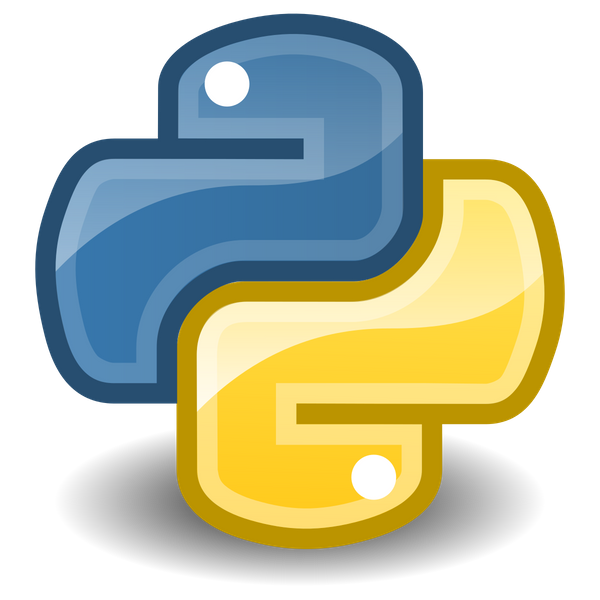
VISUAL STUDIO CODE’S PYTHON ADD-ON TRIES OUT DATA SCIENCE
Microsoft’s Python language extension for the Visual Studio Code editor has added beta data-science capabilities that support data exploration and incorporation of machine learning models.
Developers can use the beta features to explore data similar to how they would use Jupyter Notebooks, but with a familiar editor and favorite settings. User can run Individual cells using the IPython kernel and visualize frames, interact with plots, restart kernels, and export to Jupyter Notebooks. Developers can inspect code such as interactive plots and data frames.
The Python extension also lets you import Jupyter Notebooks. Imported code is extracted into a Python file; developers can use IntelliSense, refactoring, and live debugging with it. Developers can import and turn Jupyter notebooks into production-ready Python modules, extracting Python code and markdown blocks from the notebook.
Where to download the Visual Studio Code Python extension
You can download the Python extension for Visual Studio Code from the Visual Studio marketplace.
